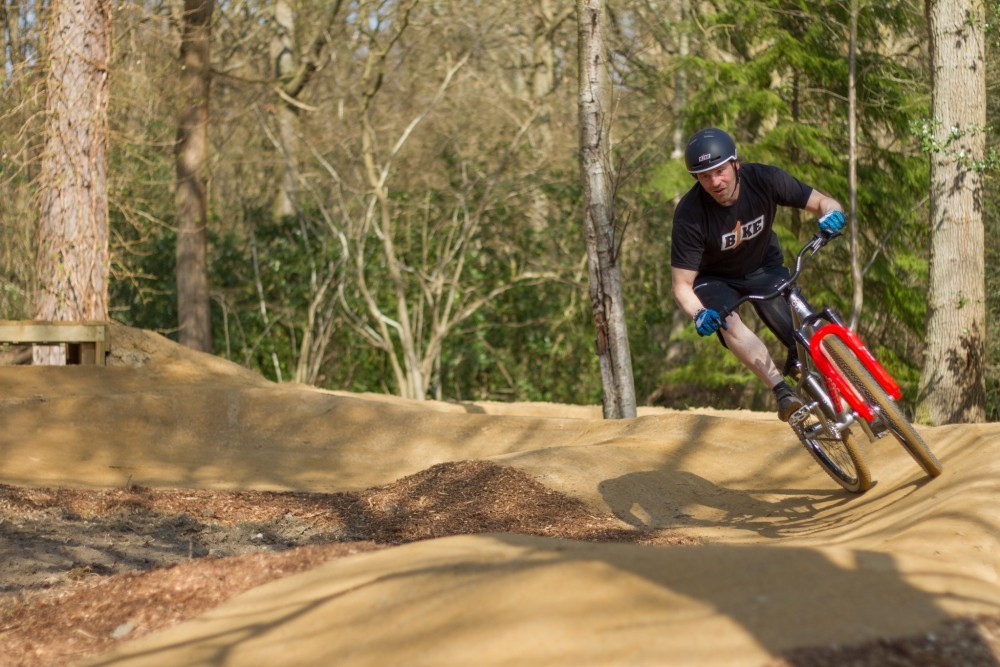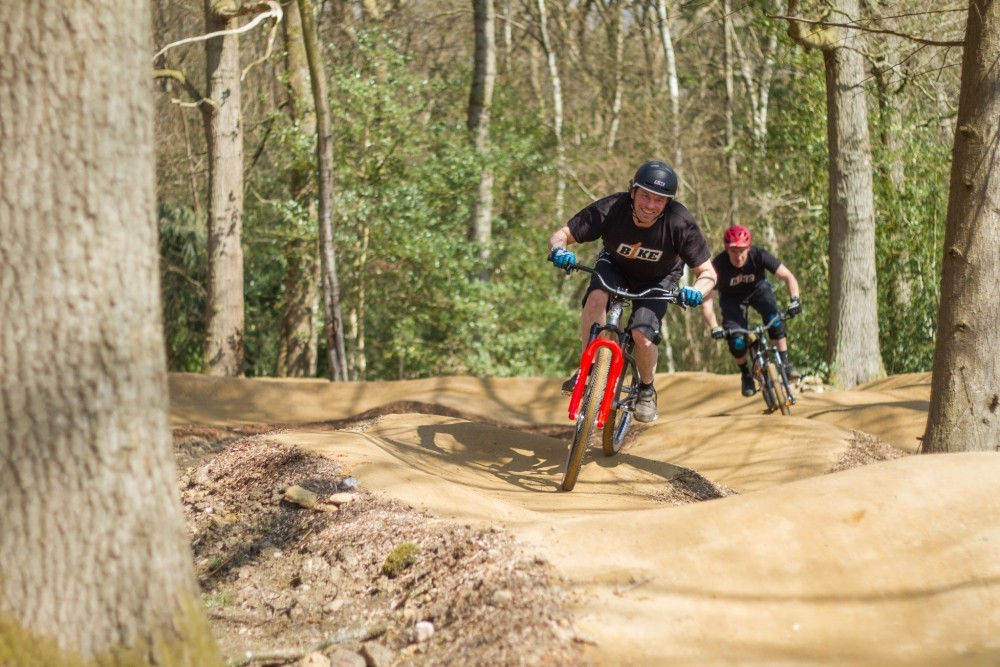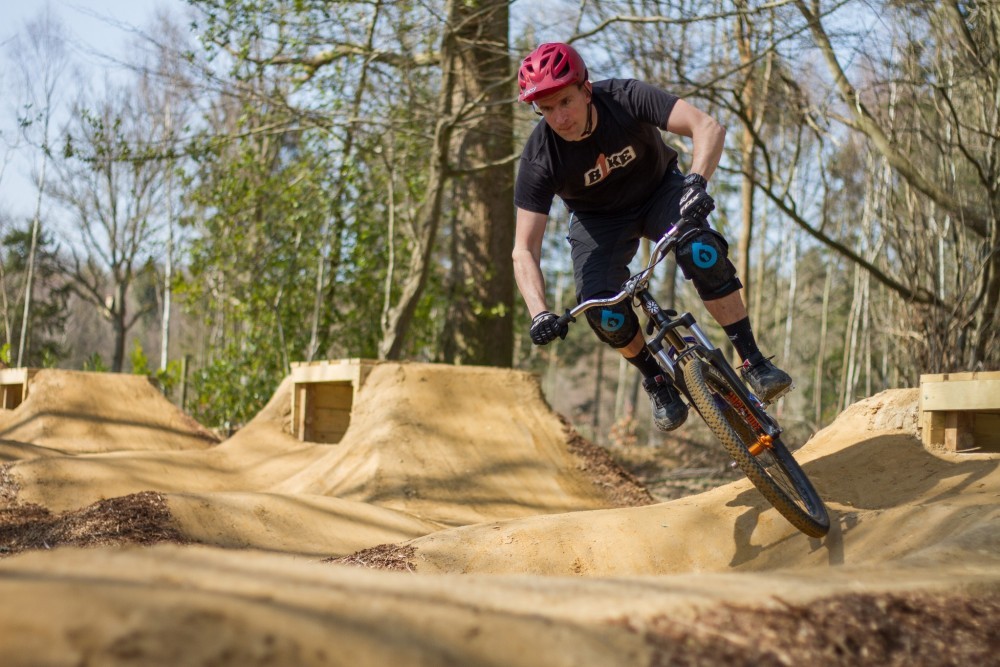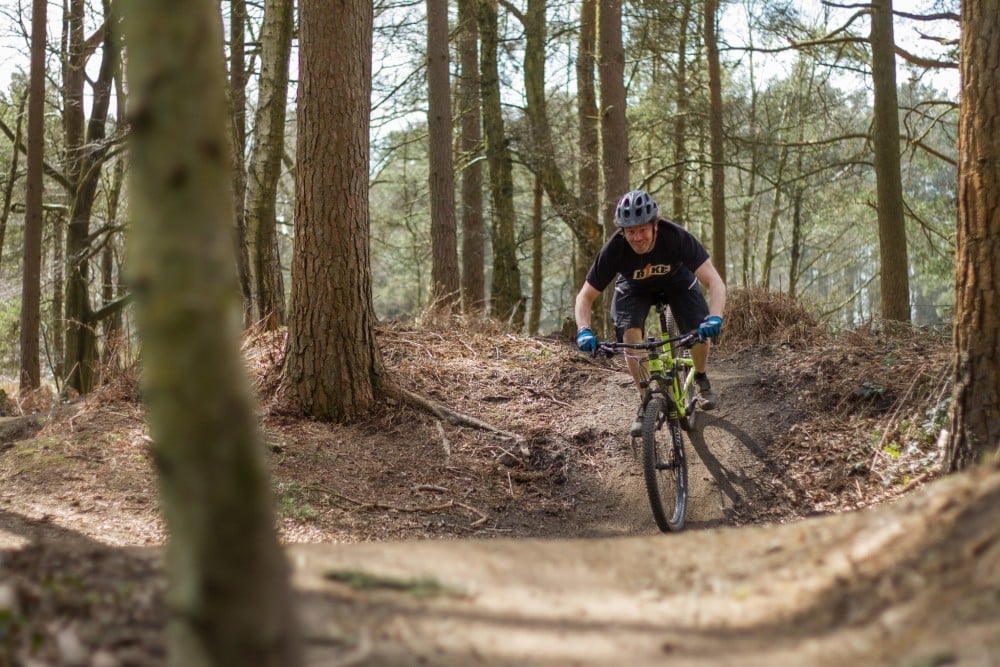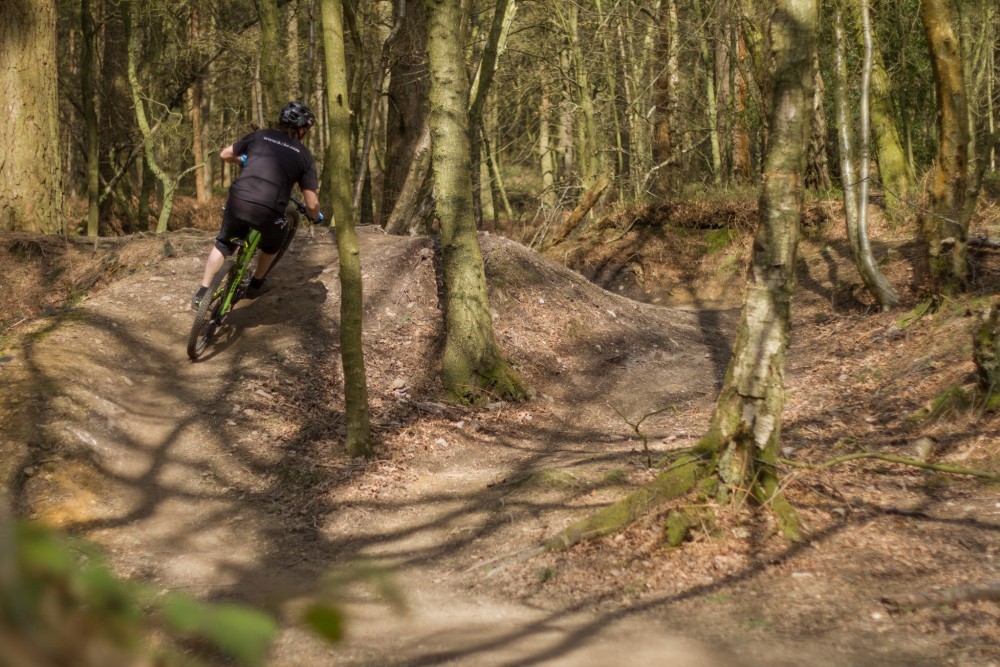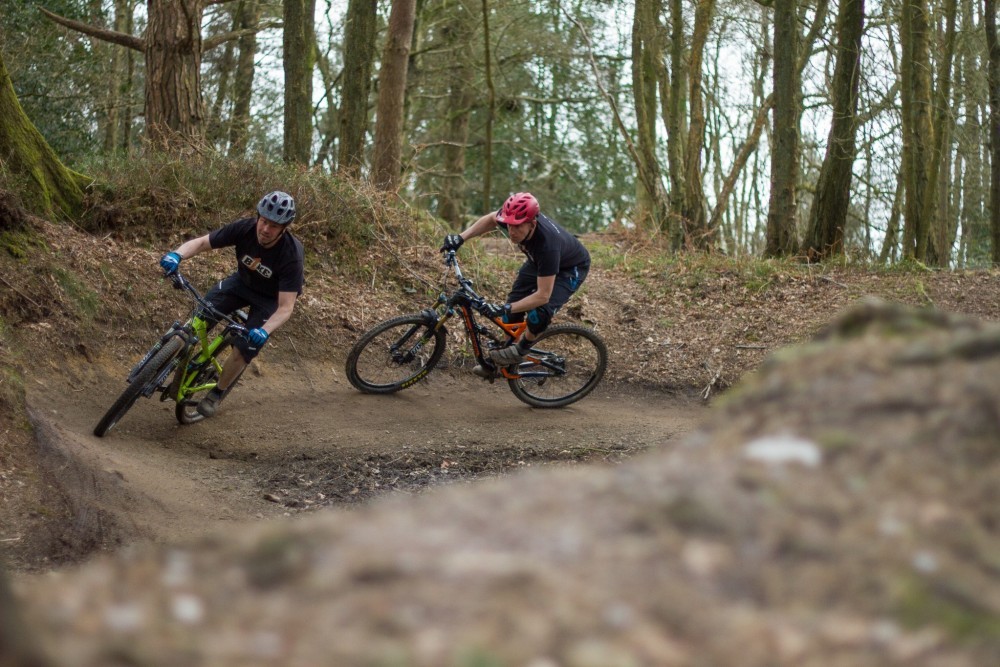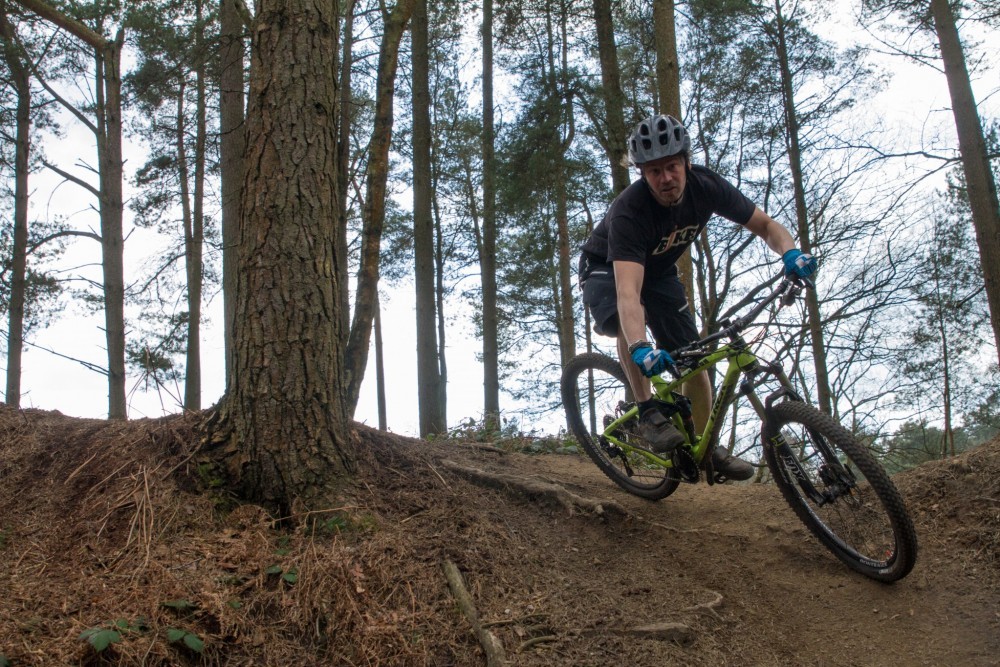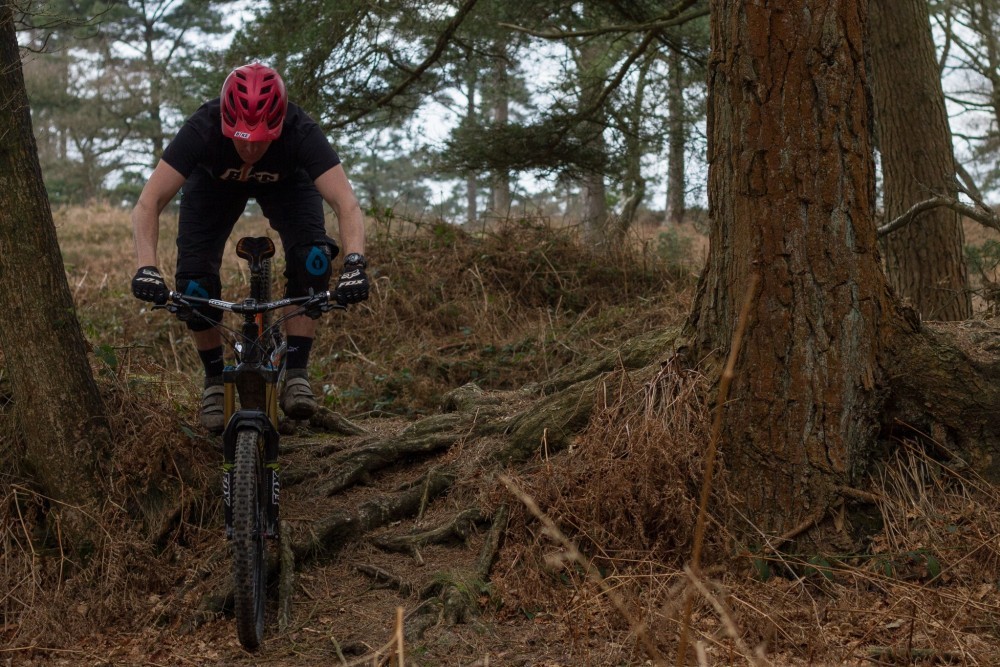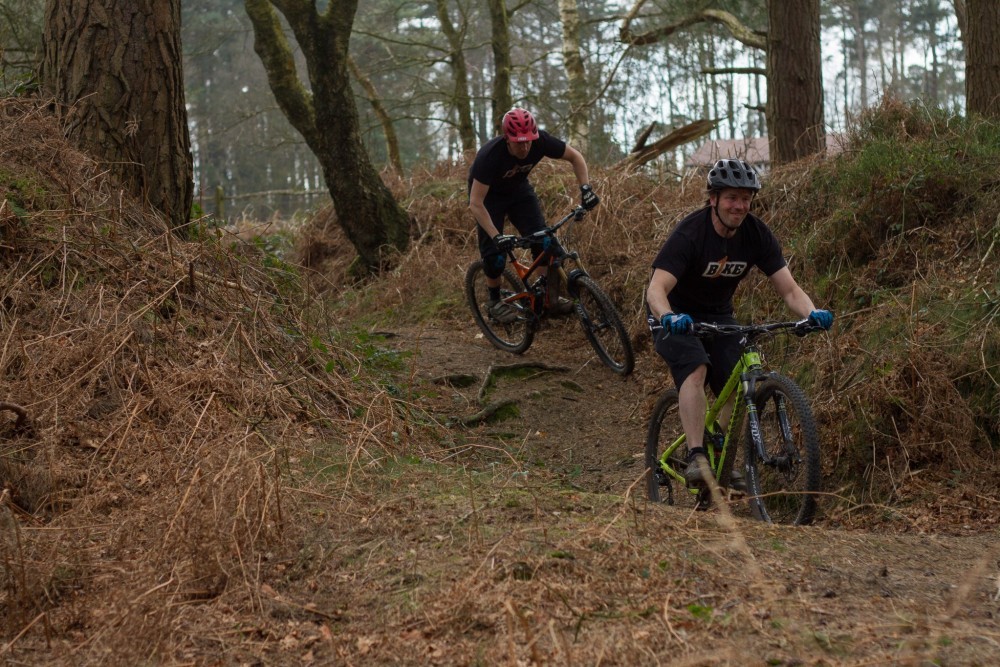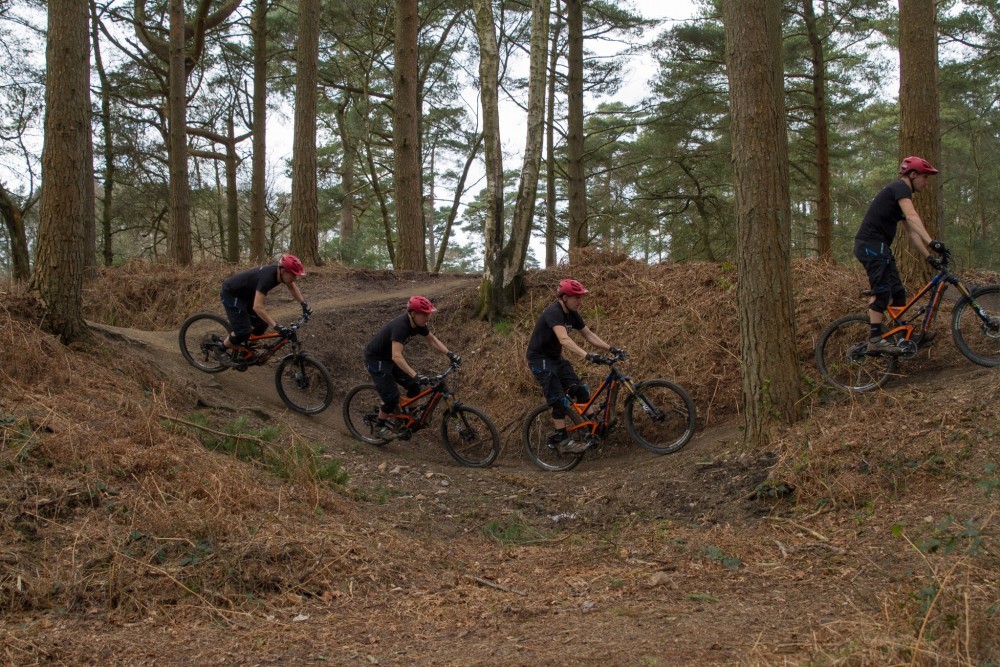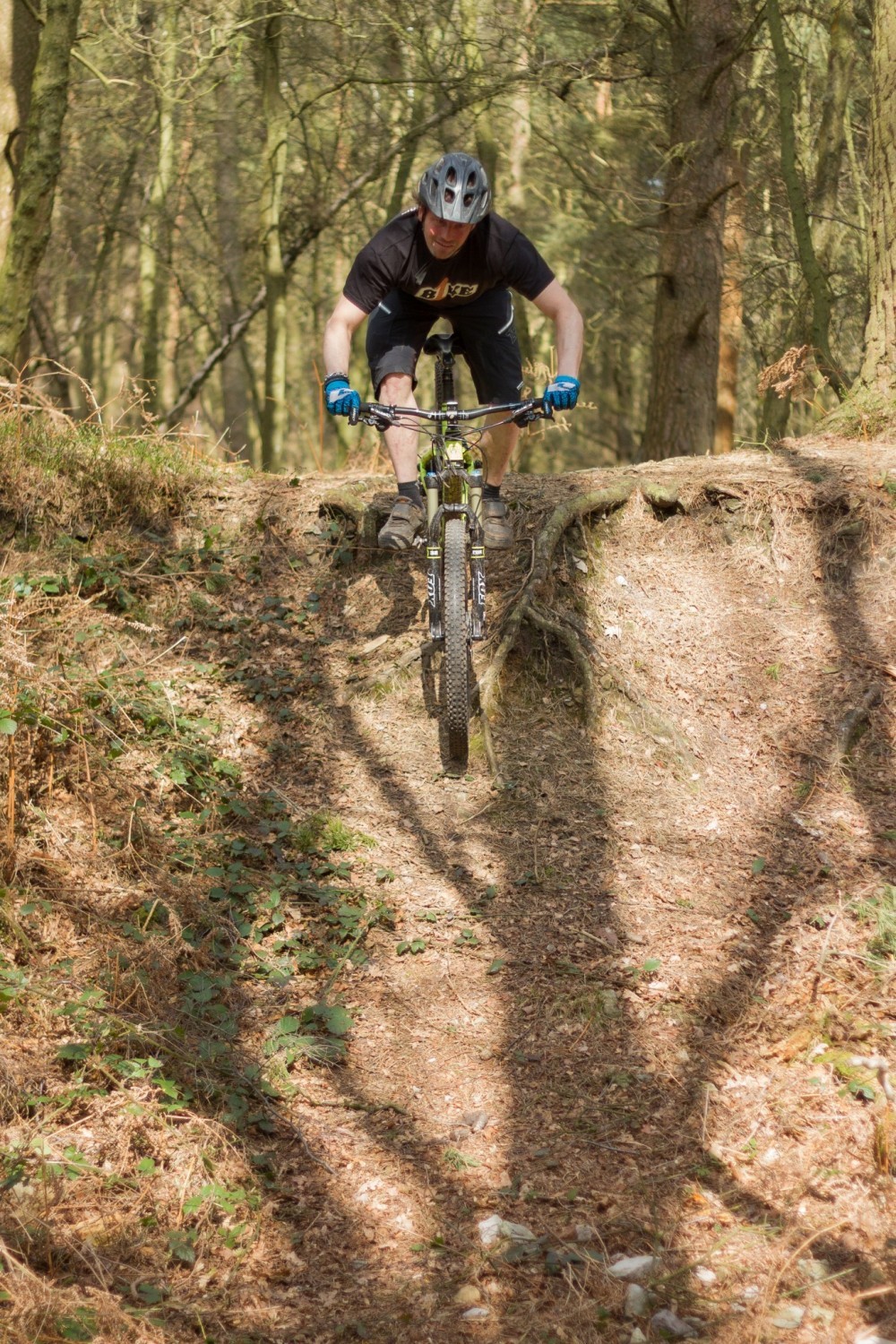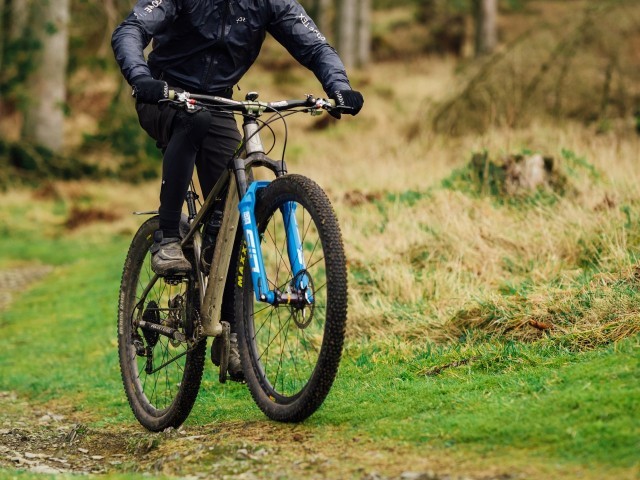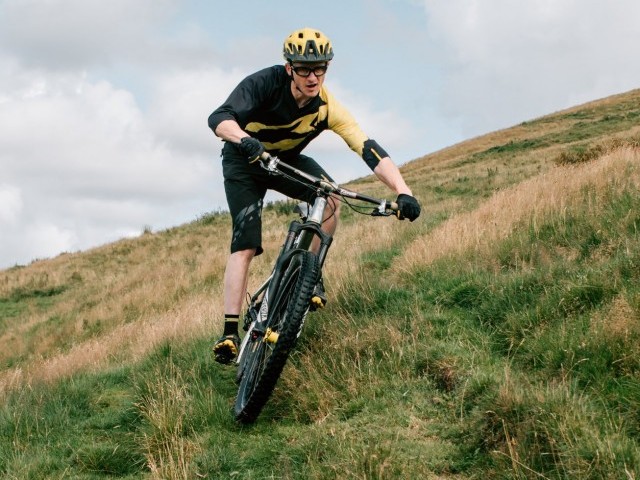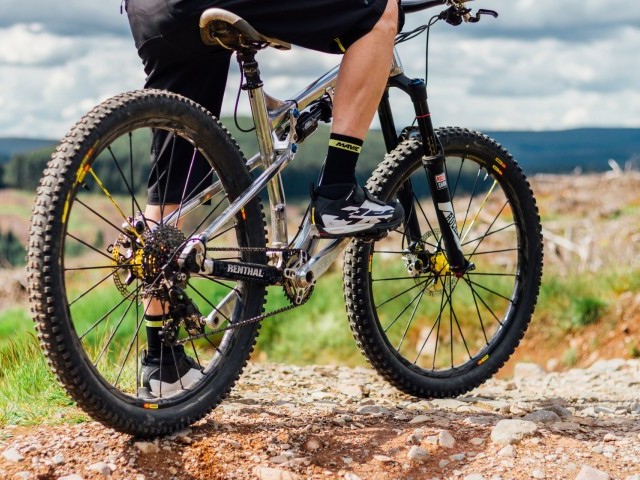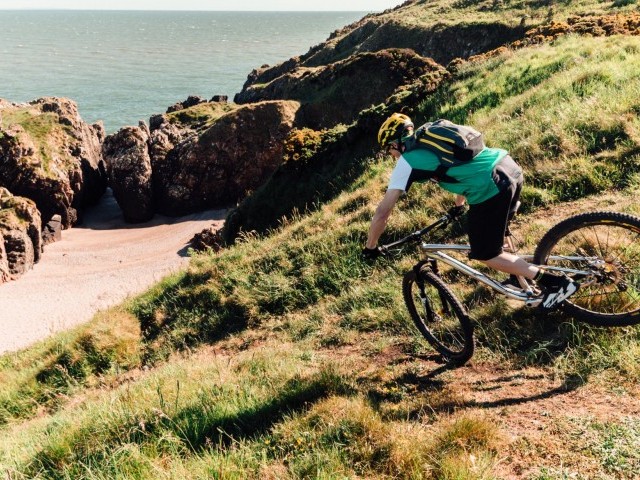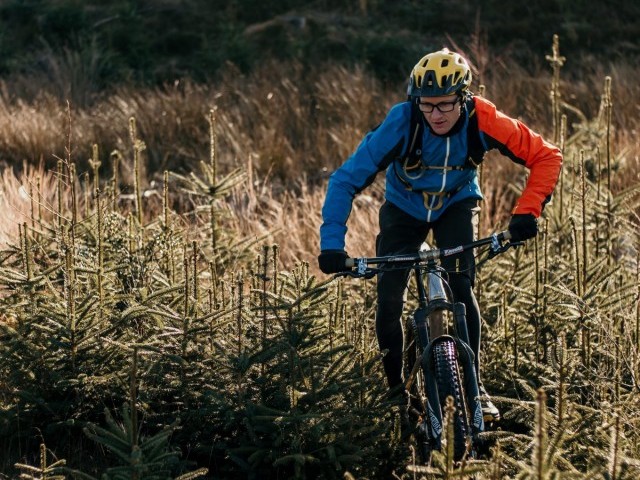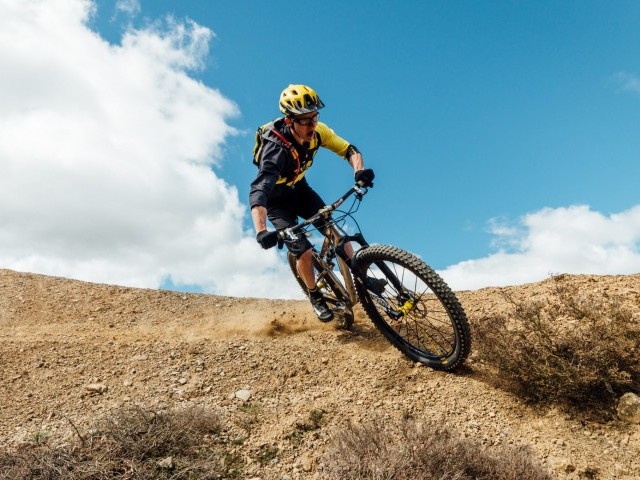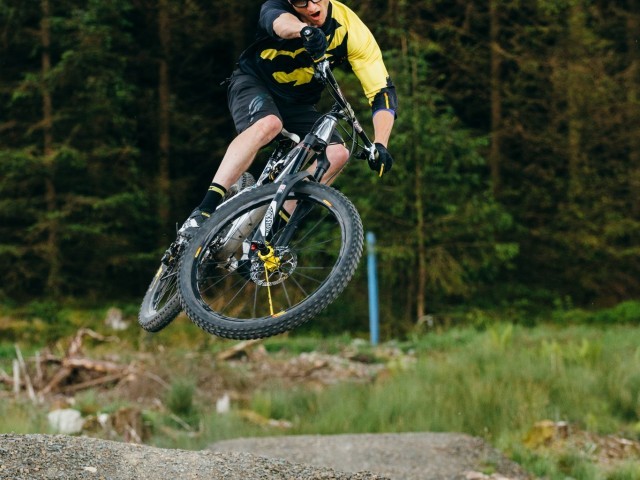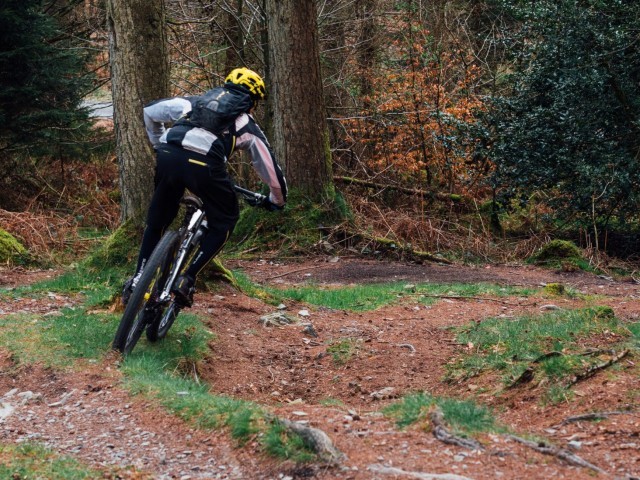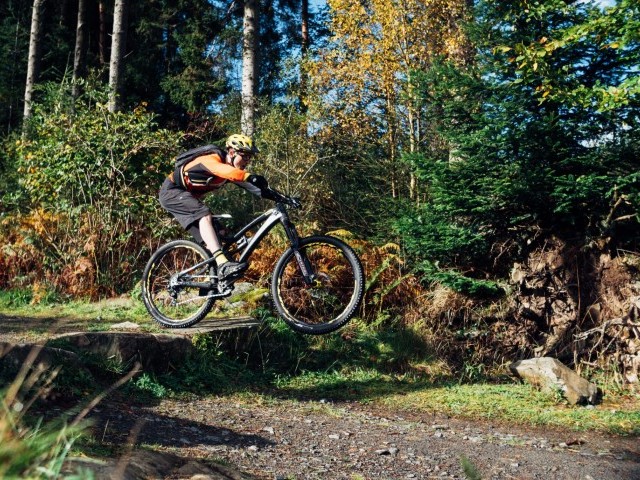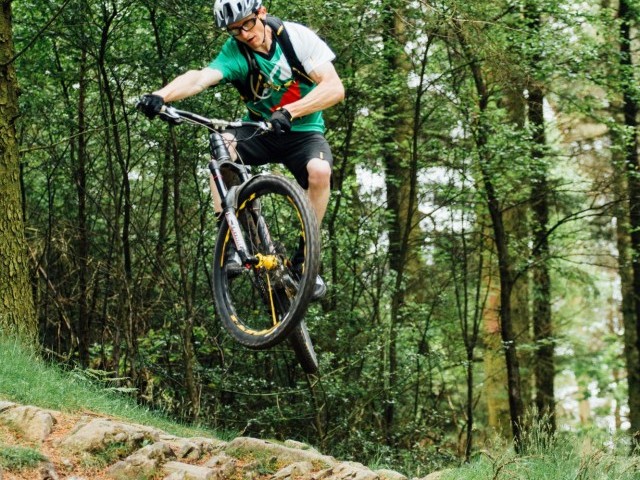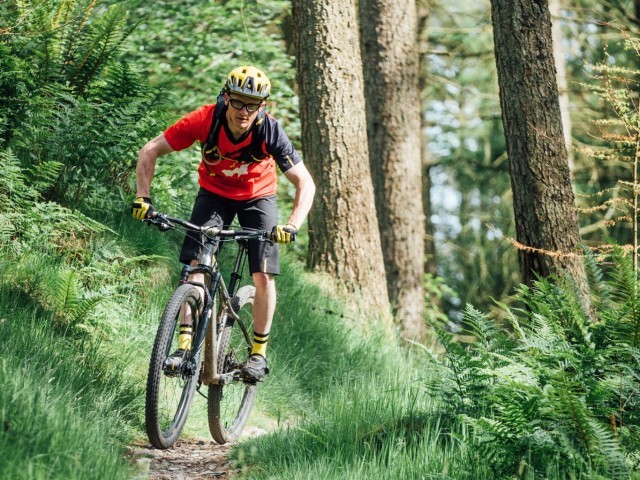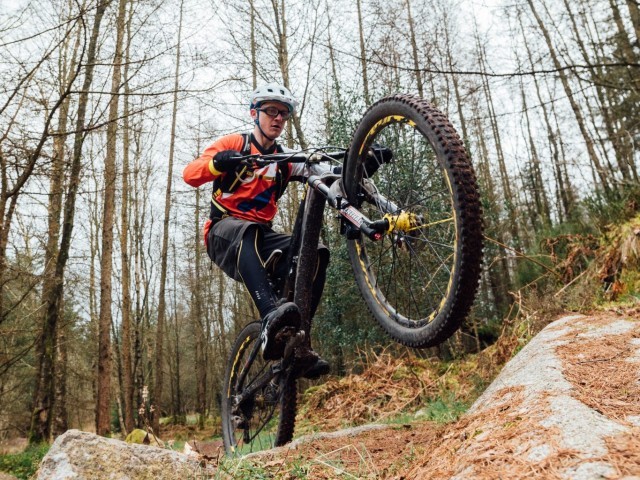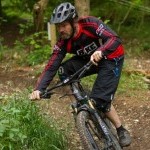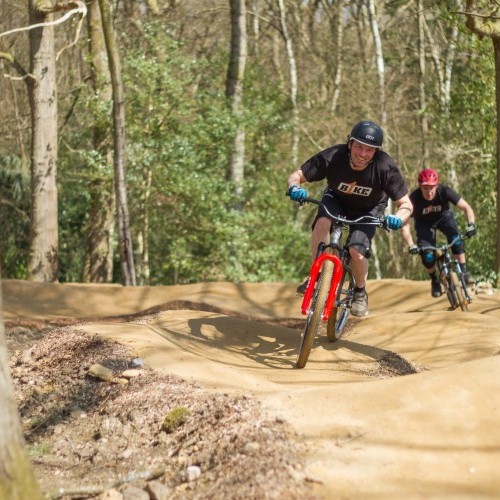
Pumping
Technique / Skills
Intoduction
If you find you are being left behind while others are pulling away from you on the trail, you seem to be pedalling way more than others that are seemingly carrying speed with little effort, or find that you are bobbling around at the mercy of the trail surface, the chances are you have forgotten your pump... or never had it in the first place.
Here of course, we are not referring to the tool to inflate your tyres, but a skill that you will be happy to use far more frequently and is sure to raise satisfaction levels far quicker than even an air compressor will raise tyre pressure.
We have referred to 'pump' on numerous occasions and it is one aspect of the physical skill we refer to as 'energy management'. To recap, energy management is about dealing with and benefiting from the potential energy hidden in every trail. As we ride through sections that potential energy is released. For some, these inputs are seen as an unnerving, destabilising aspect of riding off-road that can push the rider and upset their momentum. With good 'energy management' skills, what to one rider is a problem, for you can become an opportunity.
Free speed, smooth riding and a wide grin are all by-products of good energy management and in this case 'pumping'. Although many riders will realise how much acceleration the pump will give, it is also an important tool in gaining amplitude in your jumps and finding grip where others slip.
This issue we will take a closer look at pumping, what it is, how, when and why to apply it. Pumping is a technique that is fundamentally reliant on, and very much a part of, energy management. However, as with so many other techniques, to correctly apply and make the best use of it, all the other physical, psychological and personal elements within 'The System' play a part. The videos look at pumping firstly in terms of the most obvious application, where transitions (lumps and bumps) are more clearly defined and uniform, i.e. on a pump track. Once you have got to grips with the feel of it in this type of environment we explore the less obvious transitions on trail centre type tails and finally, where the potential energy is more hidden and more often missed - out on natural trails.
If we look at the various definitions of the word ‘pump’, included are the use of the word as a verb -
'to operate or move by an up-and-down or back-and-forth action'
We will be more concerned with up and down, but there is definitely an element of front to back, although we wont be lunging massively forward or back, more channelling force through the bike to create drive, setting our body position so that it becomes the under-rotating mass.
Essentially, we are looking at using our body mass to generate drive and momentum through every transition on the trail. A transition is any change in either gradient or direction ranging from a carefully shaped roller or berm right down to the less obvious transitions that could be the result of other rider's braking or natural features such as rocks or roots.
Once, as a rider, you start to identify these in the trail you will be surprised as to just how much energy you can release from the trail.
Let's start with the basics. How does pumping work? As ever the good ol' laws of physics are at play.
Newton's second law of motion can be formally stated as follows: The acceleration of an object as produced by a net force is directly proportional to the magnitude of the net force, in the same direction as the net force, and inversely proportional to the mass of the object.
Now although this sounds a bit complicated it is not exactly rocket science, whilst at the same time it is exactly that! Confused? No problem, I didn't listen much at school either.
To précis and simplify (in a way that the trolling physicians amongst you can critique in forums that no-one reads...), we can make the bike accelerate by introducing greater force to it. The greater the force we can apply, the more we can make the bike accelerate - if it’s done in the right way.
In the case of 'pumping' we are looking to introduce greater force (and thus acceleration) not via the action and mechanics of pushing the pedals and driving the wheels, but driving energy down and through the bike. We can pump both upslopes and downslopes and, of course, corners.
Pumping straight down into a bike on the flat we produce no acceleration, yet by dropping the heel and wrist that down-force can become through-force and thus we can (albeit momentarily) accelerate the bike. As soon as we have a down (or up) slope to work with we can push the bike through this 'transition' and generate even more speed.
If you want to think of it in really simple terms, think of how you generate power on a swing or how a skateboarder or BMX rider can use a half pipe. Dropping in, by rights they should only climb up the other side as far as the height they dropped in from (minus a bit on account of friction from tyres and the airs resistance). By pumping down and through the bike or board the rider can in fact travel further up the upside than simply rolling in would allow...no magic nor sci-fi forces required, just good energy management skills in the form of pumping.
Looking at the art of pumping in terms of the system elements that we use to beak down all aspects of riding will help to more easily understand the 'how to' as well as the 'why to' of pumping'
You and Your Equipment
As ever, how well your bike and body are conditioned will affect performance. The big factor in pumping in terms of set up is your suspension. Compression and rebound both play their part in pumping. If your bike is a full suspension rig it gives a bit to absorb and deal with the uneven trail below you, soak up bumps and soften inputs. Just as the suspension will soak up the trails energy, so too can it soak up energy you drive through the bike. A sagging suspension will soak up your pump and lessen the acceleration you can generate.
Rebound is also important. Set too fast and the bike will fire back at you unexpectedly quickly, too slow and your suspension will pack down as you ride a series of transitions. On the plus side, set up correctly your suspension will work with you and make timing your pump more easy. On a hardtail if you start to pump too early or late you can miss the moment. If your bike begins to give (as a full-susser will) you can afford to be less precise with your timing and still work the transition.
That said, if you pump a hardtail in a timely manner no energy is lost in the suspension and you will get more output from your input. Aside from your suspension set up, brake lever and cleat position (if you clip in) can be adjusted to get more from your pump. Raising your brake levers a little will encourage riding with a dropped wrist (see body position), and pulling cleats back if you have them, or placing the foot further forward on the pedal if you don't, will make it easier to drop your heels and make it easier for your body weight to become an under-rotating mass
Body Position
The key to pumping is setting your body position so that it can become the under-rotating mass. We need to pump from the area we define as 'the pocket'. Your centre of gravity needs to be just behind the centre line of the bike and just below the mid point between your head and the ground on the horizontal access. No matter how the bike pitches forward or back you need to stay in the pocket and not lunge way forward and way back with the gradient changes or as you pump.
Changes in your body position are limited and it is more a case of the bike rising and falling through undulations (as your arms and legs extend then bend), while your upper body remains pretty much in the same place (on the vertical access). The power in your pump will engage many muscle groups and include both arms and legs as well as your core. The key to good pumping is not losing your form as you pump, but delivering the push down and through the bike from a stable platform.
An easy and common error is losing upper body form as you pump and being pushed rather than staying in the 'pocket'. Keeping your body positioned in the right place from the hips down is more simple. Hips need to remain just behind heels so that the energy we create can be used to drive the bike rather than simply pushing us forward. With the upper body form it is important that as we drive up through the legs that this force does not end up pushing us up and over the front end. As we compress, diving the upper body forward might create a moment of more drive, but you should be looking to push more using the arms with a dropped wrist than simply diving our entire weight onto the bars.
Footwork
When it comes to pumping good footwork is absolutely pivotal - quite literally. As we crouch into the pocket, by rights no force should be created. It is the process of driving back up through arms and legs that creates the most obvious drive (the equal and opposite reaction force that bloke Newton identified). However, if that was the case the power would only be created as we drive back up off the bars and pedals.
Through good footwork we can, however, elongate the pump and weight the bike not only as we drive up, but also as we crouch. Effectively, as we crouch we are 'down-unweighting' the bike, but by articulating the ankles, dropping your heels, as you sink you will ensure there is drive down and through the bike as you crouch. Then as we drive back up through legs and arms the push continues. By dropping your heels your mass rotates creating drive as you sink when by rights there shouldn't be any. Rotating the wrists in a similar manner reflecting what is going on with the heels will add further to your pump and allow you to start the process even sooner, as the front wheel enters the transition.
Looking
It is easy to spend too much time looking for the moment to pump rather than feeling for it. There is a certain amount of data processing involved in looking and it is easy to miss the transition, or most of it, if we are looking for the moment to pump. Downhill to flat transitions are especially good at dragging our eye-line down. Don't succumb to the temptation to look down the barrel of your forks.
Keep your eyes up scanning for the furthest high point from you as near to your eye level. Looking through sections, and through transitions is vital to keeping your thinking separate from your 'doing'. Upslopes provide a face for us to look at. As humans, we love looking at faces. Once again, don't succumb to the temptation to stare into the slope. If the transition we are pumping is a corner it is also easy to be drawn into looking into the section rather than through. Where the corner is a berm the classic mistake is to look at the end of the berm, worrying that you are running out of berm (and time) rather than look through the exit point and ahead to the next section.
Entry / Section / Exit
As ever, by looking ahead more we can identify sections and required actions sooner. A section may have multiple transitions. The transitions on the vertical plain have a top, middle and bottom on the down slopes and a bottom, middle and top on the upslope. If your timing and technique are good you can work the entire transition generating power through all three parts of each transition. Simply rolling a down slope you will feel compression at the bottom, it is that feeling we are looking to replicate through the entire transition, be that up, down or round.
Setting the body position before entry, dropping the heels and wrists and sitting into the bike in the pocket we are ready to drive right through the transition and snaffle up that free speed. If we pump through corners not only will speed be increased, but also traction. Remember that the more pump you drive through your tyres the more you will cut through loose surface material, the more the tyre will flare (increasing the amount of rubber in contact with the trail) and the more grip you will find.
Speed Control
Although we are focussing more on using pump to generate acceleration it is important to remember that adding more pump to your riding will also allow you gain more braking force. Just as it will help find traction in corners, pumping correctly will massively improve the traction you need to find when you want to kill speed quickly. The trail will push pack at you when you brake. The wheel may bounce up off the trail if all you do is gently lean back. Driving down and through will ensure your back wheel isn't simply towed down the trail bouncing from high point to high point, but will track the ground more seamlessly and slow you down faster.
Pumping and the Four C's
For the benefit of those new to the system - the fours C's are the elements that make up the psychological skills set. Confidence, Commitment, Concentration and (emotional) Control. With regard to the four C's and their relationship to pumping it is a bit of a chicken and egg situation. The more you pump, the better your ride will feel, thus the more emotional control and confidence you will gain. By pumping more, the more you are committing to the section, the more you will unconsciously be dealing with inputs and thus the further up the concentration ladder you will be operating.
Less confident riders in a state of flight or fight, thinking in the now, tend to pump less. In this state inputs can be sharp and debilitating, bouncing you round the cockpit (or out of it entirely) and off your pedals. This will shake not only your body, but rock your confidence too. By pumping transitions and working the bike your ride will be more pleasurable, more efficient and less of a battle.
The more you pump the better you will get at it and the greater control you can take. Because it feels good you will want to do more of it, and the more you do it the better it feels. The beauty of pumping is there may be a down slope, but there is very definitely no downside. Unlike so many of the enjoyable things in life there is no come-down, kick-back, financial implication or hangover. Pumping will strengthen all the elements within the psychological skill set and put simply make riding more fun (yes, that is possible!).
When to Pump
You can pump all transitions. Some are more obvious, uniform and smooth. Rollers, the face of a jump, and bermed corners are all more obvious places pump. These transitions are easy to identify and easy to pump through. Some transitions will be more sudden and sharp (rocks and roots etc). In the case of transitions that are less rounded pumping into them may be a) difficult and b) counter productive. Jamming your wheels into a step will potential stall the bike. The bigger the step the bigger the stalling effect. In the case of sharper transitions a pre-pump might be the answer.
Rather than weighting the wheels into the transition, unweighting them as they want to rise over the obstacle is the answer. The backside of these transitions can still be pumped. In this instance it will be mostly the legs that do the work and shaping the pump through progressively dropping the heels is crucial if downforce is to become through-force. Pre-pumping before rock gardens or nests of roots will allow you to carry more speed into the section while pumping their backside will accelerate the bike as you exit the section.
Pumping through the face of a jump will put you in charge of the process to a far greater extent than simply hitting it and hoping. The 'hit and hope' approach often leads to a little bit of freeze during the take-off phase, which can continue through flight and landing phases. The shape of your jump will be defined by entry speed, shape of the actual jump and both how hard and how well you pump. We'll look at that in more detail in a future issue, but in the meantime understand that it is a crucial and highly beneficial aspect of jumping.
The Benefits
There are a whole host of benefits if you correctly pump the trail. Transitions are there in all shapes and sizes - you just need to know where to find them. Pumping will allow you to accelerate without pedalling (who doesn't like a bit of free speed?) and find grip no matter what the surface or camber of the trail.
Pumping will also add amplitude (height) to your jumps and allow you to take more control (both physically and mentally) of your increased airtime. Pumping will add power and control when braking and all round give you a far smoother ride. Above all, by pumping the bike you are doing more, moving more freely and being a far more active participant in your ride. Remember you are not a passenger being conveyed by your steed, but the driver.
Be the boss and pump the trail. Pump from the pocket and take more control of your ride. With a host of aforementioned benefits there is just one more benefit to consider...it feels great!
This technique article was in Issue 35 of IMB.
Related
By Richard Kelly
Richard Kelly has been riding bikes since forever, and teaching people to become better mountain bikers for over a decade. He’s always out in the Surrey Hills training riders, building trails and riding for himself whenever he gets the chance. His unique perspective on mountain bike technique has earned him fans the world over, with some speculating he is actually Jamiroquai or perhaps Jack Sparrow…






